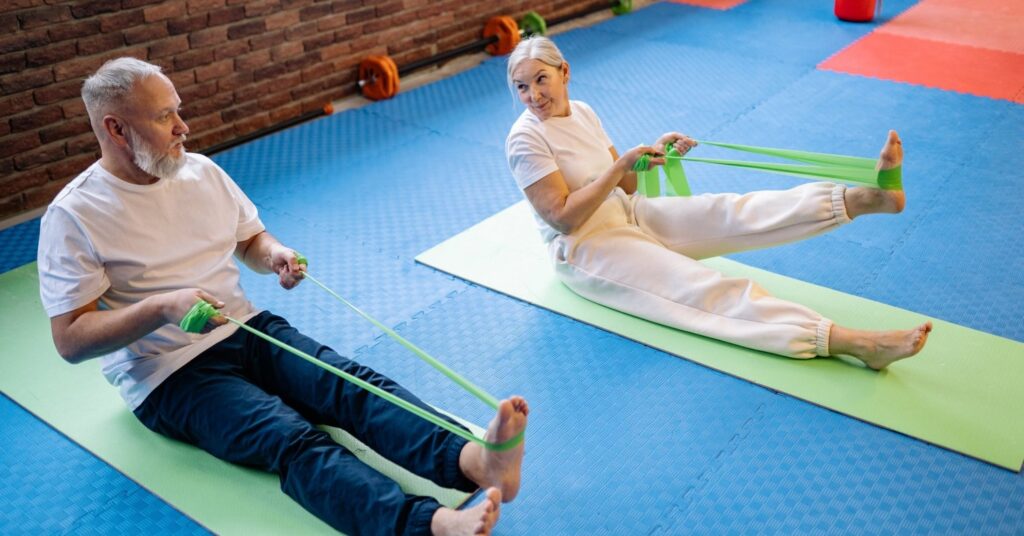
How Much Does a Doctor of Occupational Therapy Make?
In the occupational therapy field, a doctorate can open doors [...]

To understand occupational therapy practice, it makes sense to start with the theories and models behind the techniques and interventions used to treat clients. Theory, as Meredith Chandler OTR/L explains in her article “25 OT Frames of Reference”, “is a well-backed explanation of why something in the natural world is what it is or operates the way it does…researchers use theories to develop and test hypotheses… to further build valid and reliable constructs or models.”
A model, Chandler adds, is a “purposeful representation of reality in approximation to a theory” and “a mode which therapists can use to organize their thinking, skills, and vocabulary for their profession.”
Occupational therapy models provide the framework and clinical reasoning necessary to guide treatment. They are the building blocks that connect theory and practice. These models developed and evolved to utilize occupation-based treatment with a new and better understanding of mental health and well-being, psychodynamics, and occupational science.
In the practice of occupational therapy, models are guided by frames of reference that act as instructional devices for use and application. In the 1970s, Anne Mosey PhD, OTR, FAOTA introduced and defined frames of reference as “integrated collections of theoretically based information, organized in such a way that they provide guidelines for problem identification and remediation as it relates to specified elements of the profession’s domain of concern.” These frames of reference help identify useful models for specific populations and circumstances.
Understanding the conceptual models most commonly used in occupational therapy helps to map out how they are used by practitioners in decision-making and in clinical practice. While there is a much longer list, we’ll look at the top theory models to better understand their application in treatment.
The CDM, developed by occupational therapist Claudia K. Allen, is primarily known for use with patients with dementia and Alzheimer’s disease, and has evolved over more than forty years with new knowledge and understanding of mental disorders and cognitive impairment. It focuses on determining functional cognition using the Allen Scale, “a hypothetical hierarchy of brain-based abilities which are observed as predictable patterns of behavior during performance of activities.”
Interventions that are guided by CDM support a person’s “Best Ability to Function: successful and safe participation in meaningful activities in a supportive context.” CDM is used for treatment planning and goal-setting in geriatric care, forensic psychiatry, rehabilitative medicine, and mental health care.
This model is considered uniquely versatile and useful across all ages and practice settings. CMOP-E looks at both assessment of functionality in a patient as well as their engagement, arriving at a better understanding of a patient’s motivation in meaningful occupations.
This model of practice is based more on a client’s perspective and considers the relationship between three components:
This model, authored by Dr. Winnie Dunn in the late 1990s, is another framework useful across all age groups and practice settings. Its focus is on sensory processing and the relationship between a person’s neurological threshold (awareness and response to sensory events) and self-regulation.
There are four responses to sensory input outlined in this model:
Occupational therapists use these categories to help clients regulate input and function better in their daily lives.
Developed over a number of decades by the late Dr. Gary Kielhofner, Professor and Head of the Department of Occupational Therapy at the University of Illinois at Chicago, MOHO is one of the most widely used therapeutic theory models. It “explains how occupations are motivated, patterned, and performed within everyday environments.”
This personalized cycle is defined by the interaction between a person’s volition (seeking out activities), habituation (practicing these activities and roles), and performance (the skill that results from their own choice and practice). This model intends to reflect an individual’s interaction with their world.
The PEOP model was developed in the 1980s by Carolyn Baum and Charles Christiansen in response to the clinician-based biomedical model, which focused more on the patient’s physical deficit or injury than on the impact of the client’s own intrinsic and extrinsic factors. By examining these internal (psychological, physiological, cognitive) and external (culture, values, social support) influences, the practitioner can obtain a better understanding of the client.
This bio-psychosocial approach takes a more holistic view of the individual. It reflects the teachings of modern occupational therapy and its focus on the whole person and not any deficit or dysfunction.
The Kawa Model was developed in the 1990s by Japanese and Canadian occupational therapy professionals led by Michael Iwama and uses “kawa” (Japanese for “river”) as a metaphor for life. Life flows like a river, contained by river banks (social and environmental contexts) with rocks (dysfunction and disability) and assets and liabilities (driftwood) appearing that can help or hinder the river’s journey.
This model is helpful because of its metaphoric and visual strength. The Kawa model “also presents an opportunity for critical reflection on occupational therapy frameworks and their applicability in diverse cultural settings.”
Other models used in occupational therapy practice include the Occupational Adaptation Model (OA), the Ecology of Human Performance Model, the Person-Environment-Occupation Model (PEO), the Psychodynamic Model, and the Lifestyle Performance Model. Each offers a unique approach to patient care and a visual construct for planning interventions and treatment.
To practice as an occupational therapist, you must obtain at least a a master’s in occupational therapy at an accredited school. All OT master’s and doctoral programs in the US are regulated by the Accreditation Council for Occupational Therapy Education (ACOTE).
After completion of a master’s degree in occupational therapy, you also must pass the National Board of Certification in Occupational Therapy (NBCOT) examination to earn your license.
Earning your Master of Occupational Therapy (MOT) or Master of Science in Occupational Therapy (MSOT) typically takes two to three years of study. Many schools offer the opportunity to build on your bachelor’s degree in occupational therapy and follow an accelerated program, and others offer night and weekend classes that may stretch over seven semesters to accommodate full-time working professionals.
Occupational therapy master’s programs require either a bachelor’s degree in occupational therapy (or related health science), or prerequisite coursework in human anatomy and physiology, behavioral science, abnormal psychology, human development, and statistics.
Candidates must submit official transcripts from all universities and colleges (showing a GPA of 3.0 or more), letters of recommendation from professors or supervisors (typically three), proof of relevant work experience (which should include at least 20 documented observation hours), and a personal statement.
You should be aware that the Occupational Therapist Centralized Application Service (OTCAS) serves as a common application and is accepted by most occupational therapy programs.
Coursework for this degree includes clinical and professional reasoning, functional anatomy, assessment in occupational therapy, mental and behavioral health, therapeutic approaches, biomechanical and neurorehabilitation theory and practice, and productive aging theory. Clinical work with patients constitutes a large component of the curriculum, and fieldwork runs concurrently with coursework.
In occupational therapy, specialization occurs after students have earned their master’s and are already working in a specialized area of the field. Occupational therapists then have the option to earn certificates through the American Council for Occupational Therapy Education (ACOTE) in areas like pediatrics, speech therapy, autism, mental health, brain injury, and research.
There are excellent occupational therapy master’s programs across the US- some of them include:
(Last Updated on February 26, 2024)
Questions or feedback? Email editor@noodle.com

In the occupational therapy field, a doctorate can open doors [...]

In addition to having a master's degree, occupational therapists must [...]

Occupational therapy journals, like the American Journal of Occupational Therapy, [...]

Earning a Doctor of Social Work (DSW) allows social workers [...]

It's tough to balance work and life obligations with a [...]
Categorized as: Occupational & Behavioral Therapy, Nursing & Healthcare